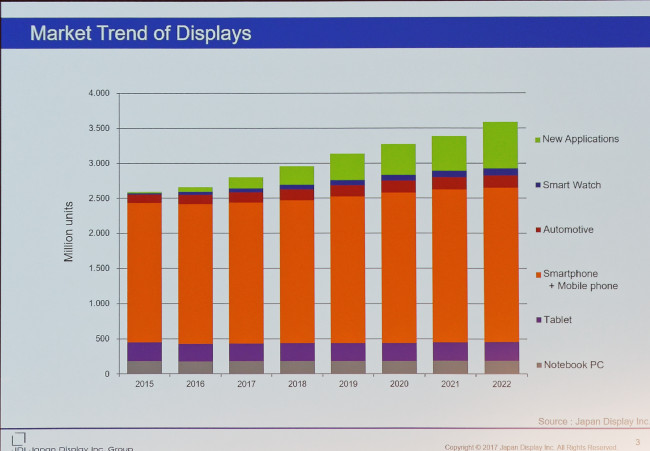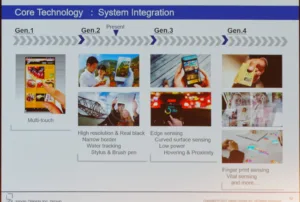 The third speaker was Holger Gerkens, President of JDI in Europe. He had three topics, Market trends core technologies and future vision. He showed a chart indicating the ‘display market size’, but the chart omitted TV and monitors! That highlights the area of interest for JDI.
The third speaker was Holger Gerkens, President of JDI in Europe. He had three topics, Market trends core technologies and future vision. He showed a chart indicating the ‘display market size’, but the chart omitted TV and monitors! That highlights the area of interest for JDI.
 JDI presented this market data, but it excludes large displays.
JDI presented this market data, but it excludes large displays.
Technical requirements continue to evolve, but form factor and new design shapes with more flexibility (in every sense) are really the future. Power consumption needs to improve. Backplanes are increasingly made using LTPS as you can put more functions on the backplane and the transistors are smaller. Response times need to be fast especially for mirror applications in cars and signal delay (camera to display) has to improve (down to 4ms). For lower power, you need to drop the frame rates to the minimum that is really needed for the application.
In smartphones, thinner bezels can be used to either reduce phone size or increase display size within a fixed handset size according to the decisions of the handset maker.
JDI sees touch developing in four phases
Turning to touch, there are now out-cell, on-cell and in-cell options and in-cell is becoming the standard because of the smaller stack. In the near future, edge sensing will be added to in-cell touch. Support for curved displays will be possible as well as hovering and proximity inputs. In phase four of the development of touch, fingerprint and body sensing will be included within the display. Human friendly sensing becomes the topic and in the future, the display becomes a fusion of the output and input devices. Then the display becomes an integrated live-interface.

